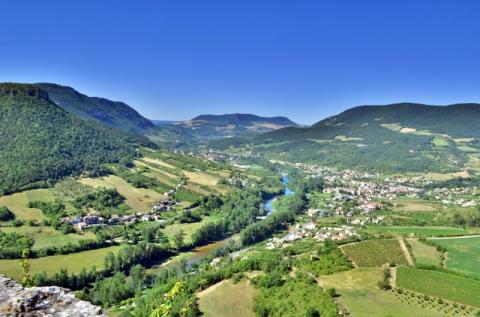Last week marked the first workshop of the PEP-BIOccIA project.
As a reminder, this project aims to map natural habitats and predict species presence across the entire Occitanie region, in order to better plan for medium- and long-term biodiversity conservation. It is led by the Région Occitanie / Pyrénées-Méditerranée, CNRS (CEFE), Data Terra, OPenIG, and TerrOïko.
To ensure that the mapping of natural habitats in Occitanie aligns with current biodiversity conservation needs and remains technically feasible, a series of workshops has been set up. The goal of these workshops is to co-develop, with future users and biodiversity experts, a classification system for mapping natural habitats in the region.
The first workshop took place on March 27 and focused on discussing the natural habitats present in Occitanie, as well as their correspondences with existing habitat classifications (EUNIS, Corine Biotope, OCS ID). The event brought together biodiversity, planning, and research stakeholders. Specifically, it enabled discussion of the initial classification results, refinement of needs to better align with local stakeholders, and grouping of similar habitat classes where applicable.
Following this workshop, participants are invited to continue contributing their insights to refine and complete the classification until May 12, 2025.
A big thank you to OPenIG for organizing and facilitating the workshops, and to the Région Occitanie / Pyrénées-Méditerranée, CSRPN Occitanie, Pôle Theia, PatriNat (OFB-MNHN-CNRS-IRD), the Regional Natural Park of the Ariège Pyrenees, the Occitanie Regional Biodiversity Agency (ARB Occitanie), ECTARE consulting firm, EODD engineering consultants, the Federation of National Botanical Conservatories, Nature En Occitanie, the Mediterranean National Botanical Conservatory, University of Toulouse, the National Botanical Conservatory of the Pyrenees and Midi-Pyrénées, IGN (National Institute of Geographic and Forestry Information), Montpellier City, Métropole and CCAS, AUAT, the Hérault Department, Opie (Office for Insects and their Environment), RTE (Electricity Transmission Network – Environment, Society & Foresight Division), the Grand Narbonne Urban Community, the Catalan Urban Planning Agency, ECO-MED, and CRERCO (Regional Community for Avoiding, Reducing, and Offsetting in Occitanie), all of whom are contributing to a habitat mapping effort more closely aligned with the needs of all stakeholders.
Upcoming workshops:
06/05/2025: Webinar – Feedback on Workshop 1 and discussion with the scientific community.
16/05/2025: Workshop 2 – Interoperability of habitat mapping with existing frameworks.
To stay up to date on the project and join the mailing list: https://www.laregion.fr/PEP-BiOccIA
